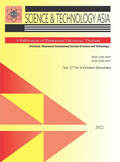|
Aris Kanjanasilanont, Sirima Mongkolsomlit, Poramet Earde, Patcharee Kooncumchoo., "Differences in Grip Strength among Wheelchair Basketball Athletes: Variations by Hand Size and Handrim-Tire Diameter", Vol. 25 No.3 July - September 2020, Published 2020-11-03. Abstract
Wheelchair basketball is a popular sport for people with disabilities. Movement skills during competition require a suitable grip with the wheelchair wheels. An inappropriate handgrip may reduce performance. The objective of this study was to investigate the effect of 3 handrim-tire diameters on the handgrip strength in 3 hand sizes of wheelchair basketball athletes. Seventy-one wheelchair basketball athletes, 20-40 years old, with a Functions Determining Classification level of 1.0-4.5, and who have played wheelchair basketball for more than 1 year, were divided into 3 hand size groups; small (ฃ180 mm.), medium (190-200 mm.), and large (ณ230 mm.). Handgrip strength, local perceived discomfort, and comfort questionnaire for using hand tools were recorded for 3 handrim-tire diameters; 63 mm., 67 mm., and 71 mm. Descriptive data analysis and two-ways mixed-model ANOVA were used to analyze the data, including a posthoc analysis with Tukey's test. The highest grip strength for small, medium, and large hands was found for handrim sizes of 63, 67, and 71 mm., respectively. Grip strength for medium hand size was significantly higher when compared to small hand size in 3 handrim-tire diameters (p<0.01, p<0.001, p<0.001, respectively). Large hand size was significantly higher when compared to small hand size in handrim-tire 67 mm. (p<0.001) and 71 mm. (p<0.001). High discomfort was found for the following: small hand size with handrim-tire 67 and 71 mm., medium hand size with handrim-tire 63 mm., and large hand size with handrim-tire 63 and 67 mm. Handgrip strength and hand discomfort in each hand size were correlated to handrim-tire diameter.
0 Comments
|
Archives
May 2023
Categories |
HoursM-F: 7am - 7pm
|
Telephone+66-(0)-2564-3001 ถึง 9 ต่อ 3247
|
|



 RSS Feed
RSS Feed